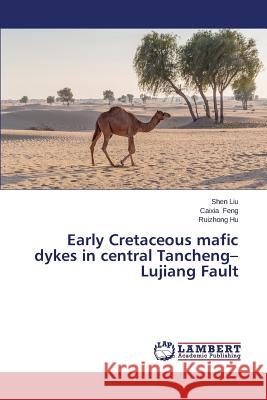Early Cretaceous mafic dykes in central Tancheng-Lujiang Fault » książka
Early Cretaceous mafic dykes in central Tancheng-Lujiang Fault
ISBN-13: 9783659676475 / Angielski / Miękka / 2015 / 72 str.
As special results in extensional setting, the mafic dykes comprise lamprophyres, dolerites and diabase porphyrites. It is generally accepted that Mesozoic destruction accurred in the North China Craton, large-scale investigation on this have been done at the same time, however, controversies on the age, space, meachnism and contral factors appear due to minor investigation on the mantle-derived rocks. As one important Fault in the North China Craton, Mesozoic mafic dykes are widespread in the Tancheng-Lujiang Fault, indubitably, the special studies on these dykes can provide important evidence for the destruction of the NCC. This study using geochronological, geochemical, and whole-rock Sr-Nd-Pb isotopic data of the Mesozoic mafic dykes from the Tancheng-Lujiang Fault. Based on the systematic study, the main results are as follows: the mafic dykes were derived from the partial melting of an enriched mantle source due to the hybridization of subducted sedimentary rocks from Yangtze Craton during 122-125 Ma. In addition, the parental magmas of these dykes then fractionated olivine and Fe-Ti oxides during ascent and underwent negligible crustal contamination during magma emplacement.
As special results in extensional setting, the mafic dykes comprise lamprophyres, dolerites and diabase porphyrites. It is generally accepted that Mesozoic destruction accurred in the North China Craton, large-scale investigation on this have been done at the same time, however, controversies on the age, space, meachnism and contral factors appear due to minor investigation on the mantle-derived rocks. As one important Fault in the North China Craton, Mesozoic mafic dykes are widespread in the Tancheng-Lujiang Fault, indubitably, the special studies on these dykes can provide important evidence for the destruction of the NCC. This study using geochronological, geochemical, and whole-rock Sr-Nd-Pb isotopic data of the Mesozoic mafic dykes from the Tancheng-Lujiang Fault. Based on the systematic study, the main results are as follows: the mafic dykes were derived from the partial melting of an enriched mantle source due to the hybridization of subducted sedimentary rocks from Yangtze Craton during 122-125 Ma. In addition, the parental magmas of these dykes then fractionated olivine and Fe-Ti oxides during ascent and underwent negligible crustal contamination during magma emplacement.











